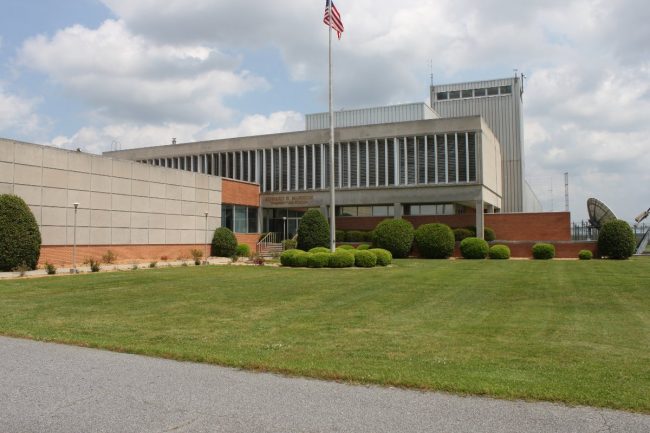I started my radio career working in HF radio, albeit somewhat different than broadcasting. I enjoy the long-distance aspect of HF communications and there is something about the high-power shortwave (HF) rigs that interest me. This is a video of a Continental 418E HF transmitter. The carrier power is 100 KW capable of 100% modulation, which means the peak output power is 400 KW. This particular model has a solid-state modulator, which is in the cage where the guy is walking around. From the video, it would appear they had several blown fuses in the modulator section. The fuses protect the individual IGBTs in the modulator.
This is an older transmitter that is getting upgraded to a 418F. The heavy cable is the connection between the solid-state modulator and the RF final section. Depending on modulation levels, it carries around 33 KV.
From the Continental Electronics website that details the SSM unit:
The modulator consists of 48 series connected modules which are switched on or off to provide the high voltage DC and the superimposed high level audio voltage. The switching is accomplished with Insulated Gate Bipolar Transistors (IGBT). A low pass filter follows the series connected modules which removes the switching signals and allows the DC and audio signals to pass to the RF amplifier. Because each of the modules is either in full conduction with very low loss, or turned off, again with very low loss, the overall modulator efficiency is in excess of 97%.
A full description of the SSM is on the Continental Electronics SSM website. It is an interesting read, including the description of the 12-phase transformer setup.
Finally, a video of the VOA transmitter site in Greenville, NC.
This is part 4 of 5, if one wanted to, one could click through to Youtube and watch the rest of them. The VOA stuff is, as the transmitter engineer notes, 1950s technology. No solid state modulators in these rigs. Those are some old transmitters, still in service and likely to remain that way until the VOA closes that site down, at some point in the future.
Like their FM counterparts, Continental HF transmitters are the gold standard when it comes to high-power tube transmitters. Sadly, they no longer make transmitters for Standard Broadcast (AM MW).






A Continental 317 was considered at WISN before I was hired and recommended by the 9 tower antenna array designer/consultant who was a friend of Jim Weldon. An RCA Ampliphase BTA-50H was purchased instead. I actually like the out-phasing system a little better than the Doherty, but both have to be set up correctly for maximum performance. I guess Continental outlived RCA, but at the time, RCA was the leader in the broadcasting field. In the FM arena, Continental is very popular around here, but they are really a slightly modified Collins design for the most part. There is only one Continental AM transmitter around here and it was nothing but trouble its entire time on the air. It still sits at a 10 kW expanded band station and is no longer in use. It is one of Continental’s early PDM solid-state units and the power amplifier modules exhibited terrible reliability. I am sure they have probably learned their lesson since.
It is too bad that Neutron Jack sold the broadcast division to Harris. The GE AM transmitters in my mind were some of the best engineered, most practical, serviceable, long life transmitters ever built. The BT-25 and the later BT-50 medium-wave units are prime examples. Massive under-rated design with top quality components made these AM rigs last a minimum of 40 years. If you maintained them well, they could still be running today. VOA has some and they have proven their over 50 years of service.
You are right about the Continental FMs, they are essentially updated Collins 831 series transmitters. The 816’s are solid units and the ones that we take care of are still highly reliable rigs. I have only had experience with on Continental AM transmitter, a 314 on 1400 KHz. I will say, they where better than the Collins power rock, 828E-1. I had one which had been severely neglected and had a difficult time staying on the air for any period of time. It was very hacked up and truth be told, I probably spent too much time trying to right things. In the end, it was taken out of service and replaced with a BE AM6A.
The GE transmitters were also solid units, which is. of course why they stopped making them.
Help:
I need some information about the Switched power supply / PWM Power supply ( it appears on the first video ) layout of a Continental Shortwave TX ( 100 KW) or a blue print or a schematic.
I appreciate any tip / advice.
Thanks in advance
Quiero información completa de la forma que trabaja el transmisor CONTINENTAL 418F de onda corta. Si su modulador es DOGERTY, o por placa, o es PWM. Cuanto voltaje y corriente fina.Gracias